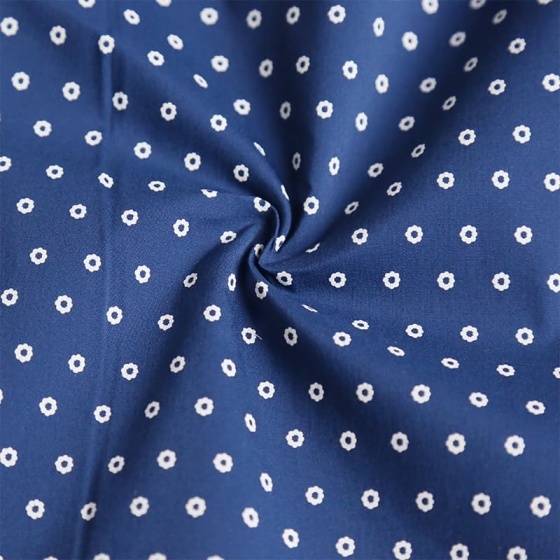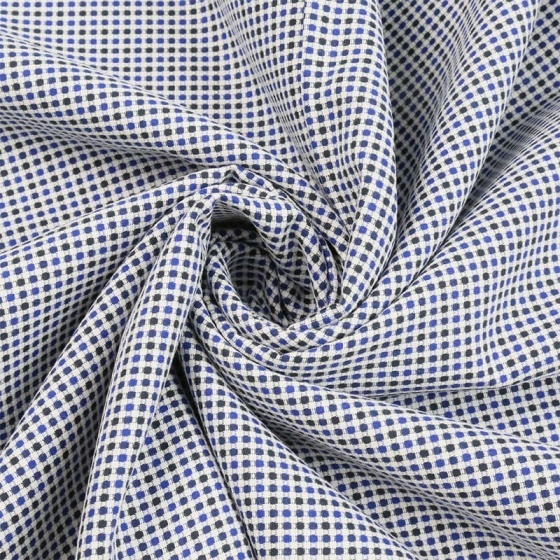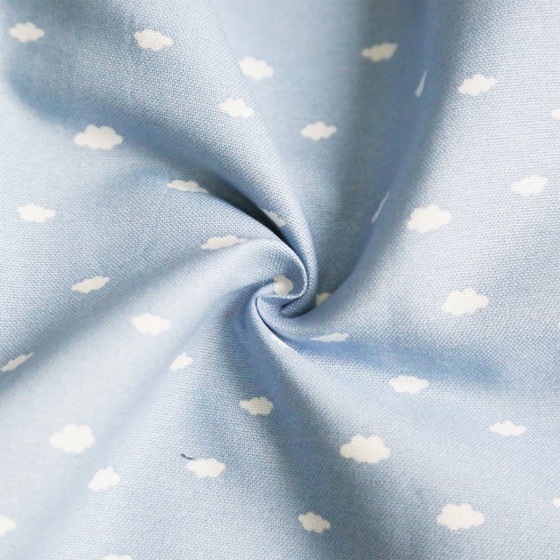How Printed Cloth Fabric is Transforming Fashion Industry Standards
Aug 16,2025
How Printed Cloth Fabric is Transforming Fashion Industry Standards
Table of Contents
- 1. Introduction to Printed Cloth Fabrics
- 2. A Brief History of Printed Fabrics
- 3. Techniques Used in Printing Cloth Fabrics
- 4. The Sustainable Shift in Fabric Printing
- 5. Innovations in Fashion Driven by Printed Fabrics
- 6. Current Market Trends in Printed Fabrics
- 7. Changing Consumer Preferences Towards Printed Fabrics
- 8. The Future of Printed Cloth Fabrics in Fashion
- 9. Conclusion
- 10. FAQs
1. Introduction to Printed Cloth Fabrics
The fashion industry has always been a dynamic landscape, constantly evolving to meet consumer demands and trends. One of the most significant transformations in recent years has been the rise of printed cloth fabrics. These textiles not only add visual appeal but also provide endless possibilities for creativity and innovation. In this article, we will explore how printed cloth fabrics are shaping new standards within the fashion industry, influencing design, production, and sustainability practices.
2. A Brief History of Printed Fabrics
Printed fabrics have a rich history that dates back centuries. The earliest forms of fabric printing can be traced to ancient civilizations, where artisans used natural dyes to create patterns on textiles. As technology advanced, so did the methods of printing fabrics. The introduction of block printing, screen printing, and digital printing has revolutionized how designers approach fabric patterns.
2.1 Traditional Techniques
Historically, techniques like batik and tie-dye have played a pivotal role in various cultures. These methods not only reflect cultural heritage but also set the foundation for contemporary fabric printing styles.
2.2 Modern Innovations
With the advent of digital printing in the late 20th century, designers gained capabilities that allowed for high-resolution images and intricate designs on fabric. This innovation has significantly impacted fashion, giving rise to unique collections that cater to diverse consumer preferences.
3. Techniques Used in Printing Cloth Fabrics
The methods used for printing cloth fabrics can be categorized into several types, each with its unique characteristics and applications.
3.1 Screen Printing
Screen printing is a popular technique that involves pushing ink through a mesh screen onto the fabric. This method is ideal for bold designs and is often used for large production runs due to its efficiency.
3.2 Digital Printing
Digital printing has gained traction for its ability to produce detailed and intricate designs without the need for screens. This process is perfect for short runs and allows for customization, catering to individual consumer tastes.
3.3 Sublimation Printing
Sublimation printing utilizes heat to transfer dye onto textiles. This technique is particularly effective for polyester fabrics, resulting in vibrant colors that are long-lasting.
4. The Sustainable Shift in Fabric Printing
As environmental concerns rise, the fashion industry is under pressure to adopt more sustainable practices. Printed cloth fabrics are at the forefront of this movement, with many brands exploring eco-friendly materials and printing techniques.
4.1 Eco-friendly Materials
Organic cotton, recycled polyester, and bamboo fabrics are gaining popularity among manufacturers committed to sustainability. These materials not only reduce environmental impact but also appeal to eco-conscious consumers.
4.2 Water-based Inks and Dyes
The use of water-based inks and dyes is becoming increasingly common in fabric printing. Unlike traditional petroleum-based inks, water-based options emit fewer toxins and are safer for the environment.
5. Innovations in Fashion Driven by Printed Fabrics
Printed cloth fabrics are not just changing aesthetic trends; they are also driving technological innovations in the fashion industry.
5.1 Customization and Personalization
Thanks to digital printing technologies, brands can offer personalized products that resonate with individual consumer preferences. This trend is shifting how fashion is marketed and sold, allowing greater consumer engagement.
5.2 3D Printing and Textiles
The integration of 3D printing technology with fabric printing is creating opportunities for designers to explore new dimensions in fashion. This fusion allows for complex patterns and structures that were previously unimaginable.
6. Current Market Trends in Printed Fabrics
The market for printed fabrics is thriving, influenced by consumer preferences and technological advancements.
6.1 Trendy Patterns and Designs
From florals to abstract graphics, the range of patterns available in printed fabrics is expanding. These designs often reflect current societal themes, making fashion more relevant than ever.
6.2 Digital Marketplaces
The rise of e-commerce has made it easier for consumers to access printed fabrics. Online platforms provide a space for both established brands and independent designers to showcase their collections, thus democratizing fashion.
7. Changing Consumer Preferences Towards Printed Fabrics
Today’s consumers are more informed and discerning than ever. As a result, their preferences are shaping the direction of the fashion industry.
7.1 Emphasis on Unique Designs
Consumers increasingly seek out unique, one-of-a-kind pieces that allow them to express their individuality. Printed fabrics, with their endless design possibilities, cater perfectly to this demand.
7.2 Ethical Considerations
With a greater awareness of ethical fashion, consumers are gravitating towards brands that prioritize sustainable practices, including eco-friendly printing methods. This shift is encouraging more companies to adopt responsible practices in their production processes.
8. The Future of Printed Cloth Fabrics in Fashion
Looking ahead, the future of printed cloth fabrics in the fashion industry appears bright. Innovations in technology and shifts in consumer behavior will continue to redefine how fabrics are designed, produced, and marketed.
8.1 Advanced Technologies
As printing technologies evolve, we can expect even more intricate designs and sustainable practices. Techniques like AI-driven pattern generation may soon allow designers to create novel prints that resonate with consumers.
8.2 Inclusivity in Fashion
Printed fabrics can significantly contribute to inclusivity in fashion, offering diverse styles that cater to a wide range of body types, cultures, and personal expressions.
9. Conclusion
In conclusion, printed cloth fabric is undeniably transforming the standards within the fashion industry. As we have explored, the rise of innovative techniques and sustainable practices is not only reshaping aesthetic trends but also redefining the relationship between brands and consumers. By embracing this evolution, the fashion industry can continue to thrive, providing unique, responsible, and expressive clothing options for all.
10. FAQs
What are printed cloth fabrics?
Printed cloth fabrics are textiles that feature designs, patterns, or images applied to their surface using various printing techniques. These fabrics enhance visual appeal and offer creative possibilities for fashion design.
How do printed fabrics impact sustainability?
Printed fabrics can impact sustainability by utilizing eco-friendly materials and inks, reducing waste, and promoting ethical production practices within the fashion industry.
What printing techniques are commonly used for fabrics?
Common printing techniques for fabrics include screen printing, digital printing, and sublimation printing. Each method has its unique applications and benefits.
How do consumer preferences influence printed fabric designs?
Consumer preferences greatly influence printed fabric designs, with trends shifting towards unique, personalized, and ethically produced materials. This changing landscape encourages brands to innovate and adapt.
What does the future hold for printed cloth fabrics in fashion?
The future of printed cloth fabrics in fashion looks promising, with advancements in technology and a growing emphasis on sustainability and inclusivity driving new trends and innovations.
By understanding these elements, we can appreciate how printed cloth fabrics are not only changing the aesthetic landscape of fashion but also contributing to a more sustainable and inclusive industry.
More Events
How Printed Cloth Fabric is Transforming Fashion Industry Standards
How Printed Cloth Fabric is Transforming Fashion Industry Standards Table of Contents 1. Introduction to Printed Cloth Fabrics 2. A Brief History of Printed Fabrics 3. Techniques Used in Printing Cloth Fabrics 4. The Sustainable Shift in Fabric Printing 5. Innovations in Fashion Driven by Printed Fabrics 6. Current Market Trends in Printed Fabrics 7. Changing Consumer
Aug 16,2025
A Comprehensive Guide to Caring for Your Linen Printed Fabric
A Comprehensive Guide to Caring for Your Linen Printed Fabric Table of Contents 1. Understanding Linen Printed Fabric 2. Why Proper Care is Essential 3. Cleaning Your Linen Printed Fabric 3.1. Washing Techniques 3.2. Drying Methods 3.3. Removing Stains 4. Ironing and Pressing Linen Printed Fabric 5. Storing Your Linen Textiles Properly 6. Tips for Maintaining Color Vibrancy 7. Common Issues with L
Aug 14,2025
The Transformative Power of Digital Printed Fabric in Textile Industry
Digital printed fabric represents a groundbreaking shift in the textile industry, especially in dyeing and printing. Unlike traditional printing methods that often rely on screens and extensive setups, digital printing allows for direct application of ink onto fabric using advanced printing technology. This method offers a multitude of advantages that are reshaping how textiles are produced and co
Aug 13,2025
Do Not Heasite To Contact W&S, Your Comprehensive Solution Provider Now!
We like produce phone cases but we more like to see you earn lots of money by working with us.
Quick Link
Garment
Copyright © Nantong Wang and sheng Textile Co., Ltd. All Right Reserved.

Whatsapp: 008613861954999
Looking forward to your call
Tel: 0086-513-80609999
Looking forward to your call
Email: Nick.wang@ntwangsheng.com
Looking forward to your letter





